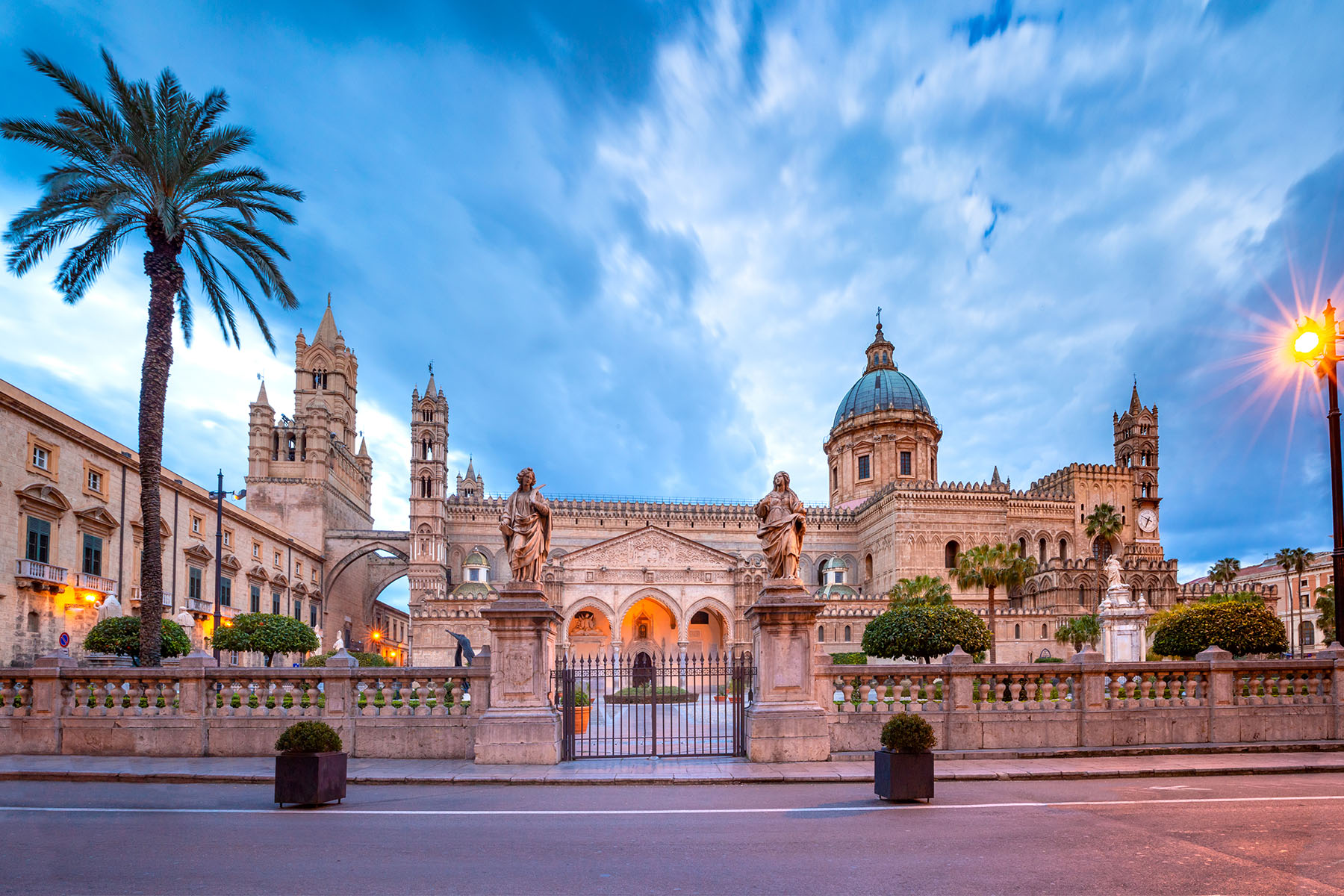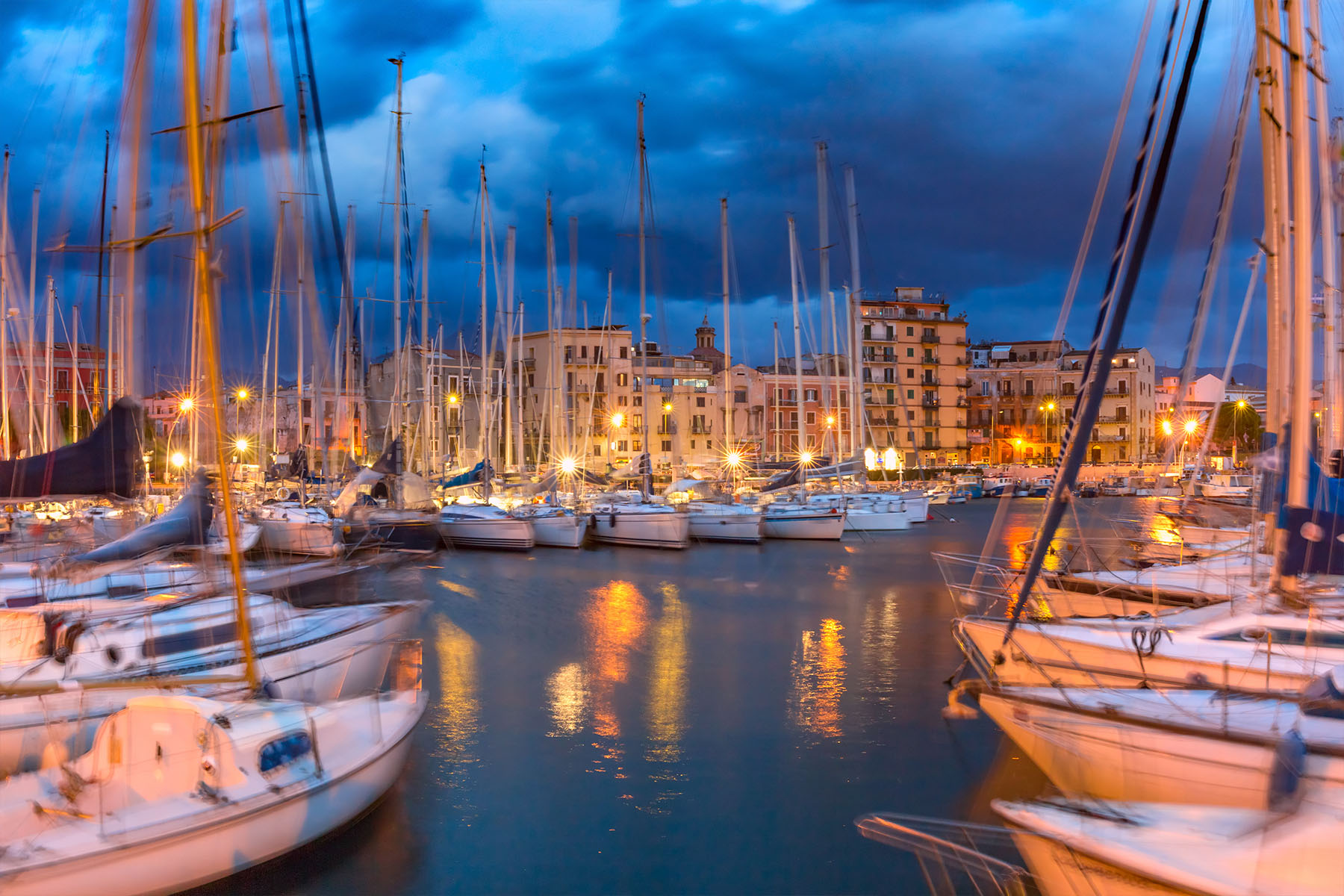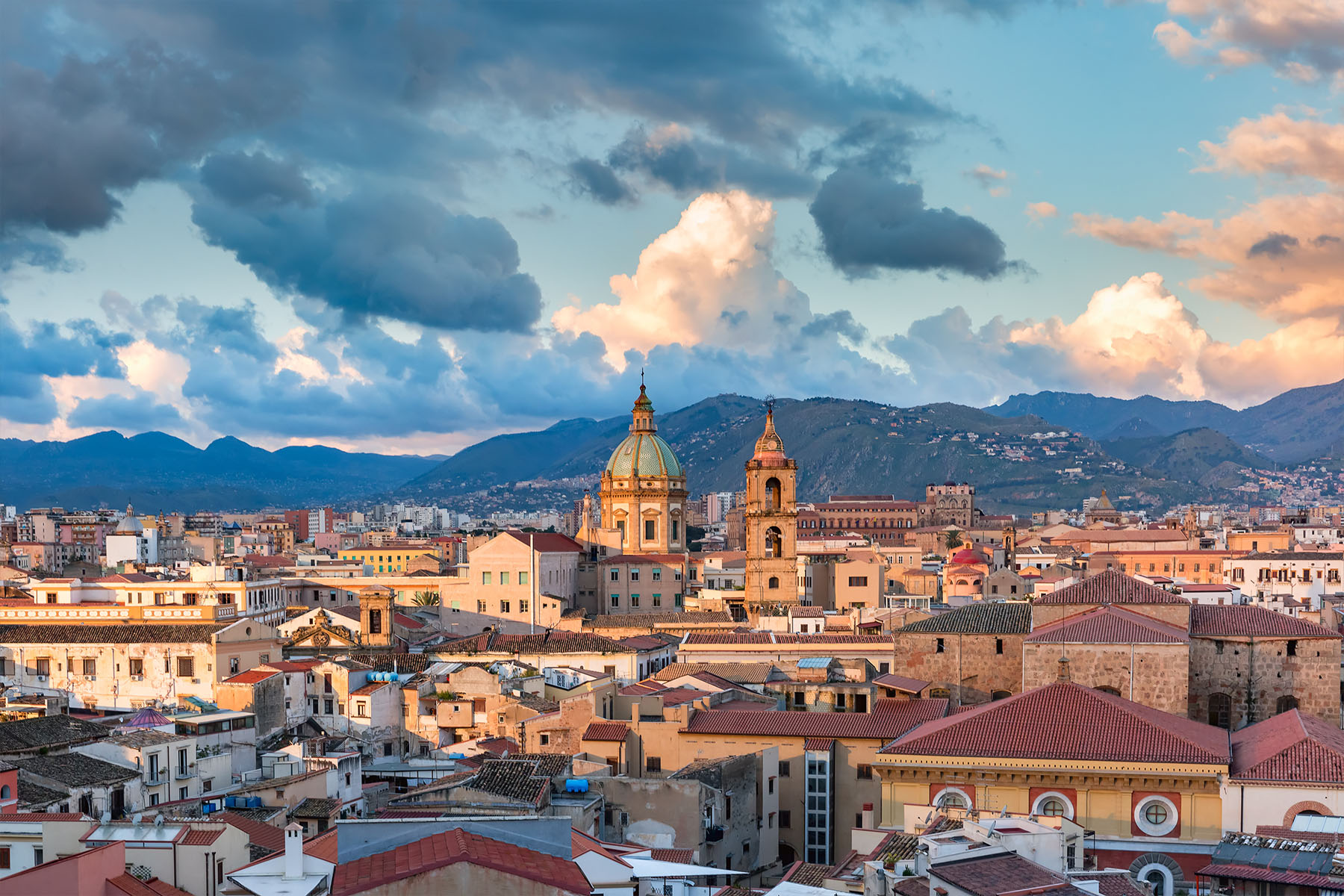Tour around Palermo
About 1 hour from Cefalù, is the capital of Sicily – Palermo. The route of the tour through the streets of Palermo can start from Piazza Giulio Cesare, also known as Piazza Stazione, dominated by an elegant neoclassical and art nouveau building. In the center is the statue dedicated to Vittorio Emanuele. From here you can reach two of the main arteries of the city: via Roma, modern and busy, and via Maqueda, rich in history and vitality, which leads to Piazza Verdi, where stands the famous Teatro Massimo.
Walking along Via Maqueda, the beating heart of the city, you can breathe the multicultural soul of Palermo. Here coexist historical businesses and shops run by families from Africa, Bangladesh and Sri Lanka. The presence of the mosque in Via Giosafat is clear evidence. The street touches iconic places such as the market of Ballarò, the Quattro Canti and Piazza Pretoria, also called Piazza della Vergogna for the nudity of the statues of its splendid Renaissance fountain. The latter, with its water games, stairs and mythological figures, is one of the most scenic corners of Palermo.
Continuing towards via Bellini, you reach the extraordinary Church of Santa Caterina d’Alessandria, an authentic masterpiece of the Palermo baroque. Originally it housed young aristocrats who chose monastic life. The church, with a Latin plan and decorated with polychrome marbles, is a triumph of the baroque style, with ornaments that fill every space according to the taste of the time.
Our journey continues with another baroque jewel: the Church of Jesus, also known as Casa Professa, located near the market of Ballarò. With its sober exterior facade and incredibly decorated interiors, it is one of the most impressive examples of the Sicilian Baroque. The three aisles, covered with marble decorations, make this church a place of rare beauty.
At lunchtime, a stop at the Ballaro Market is a must. Among stalls full of fresh fish, fruits, vegetables, cheeses and spices, you are overwhelmed by the energy of the vendors and their colorful shouts – the famous Sicilian abbanniare. An authentic experience that will surely leave you satisfied.
In the afternoon, the tour continues in the Jewish quarter of Harat al Yahud, witness to the Jewish presence in Palermo from the 6th century until 1492. The district preserves the memory of that time with buildings such as the municipal historical archive and the church of San Nicolò da Tolentino, built on the old synagogue. The two main areas, La Meschita and La Guzzetta, take us back in time, while the ancient Jewish cemetery stood where today we find Corso dei Mille.
Then follows the beautiful Church of San Giovanni degli Eremiti, famous for its characteristic red domes, symbol of the fusion between Islamic and Christian architecture. Once a mosque, it became in the Norman era a monastery and church, always maintaining a strong spiritual value. Its unmistakable silhouette stands out in the sky of Palermo, making it one of the most iconic images of the city.
The tour ends at Piazza Indipendenza, one of the most important in the city, where you will find Porta Nuova, Palazzo dei Normanni and the splendid Palatine Chapel. The square also houses a well-kept garden and the obelisk dedicated to the Martyrs of Italian Independence, closing in beauty a journey among the historical and cultural wonders of Palermo.
Passeggiando lungo via Maqueda, cuore pulsante della città, si respira l’anima multiculturale di Palermo. Qui convivono botteghe storiche e negozi gestiti da famiglie provenienti da Africa, Bangladesh e Sri Lanka. La presenza della moschea in via Giosafat ne è chiara testimonianza. La via tocca luoghi iconici come il mercato di Ballarò, i Quattro Canti e Piazza Pretoria, detta anche Piazza della Vergogna per le nudità delle statue della sua splendida fontana rinascimentale. Quest’ultima, con i suoi giochi d’acqua, scalinate e figure mitologiche, rappresenta uno degli angoli più scenografici di Palermo.
Continuando verso via Bellini, si raggiunge la straordinaria Chiesa di Santa Caterina d’Alessandria, autentico capolavoro del barocco palermitano. In origine ospitava giovani aristocratiche che sceglievano la vita monastica. La chiesa, a pianta latina e decorata con marmi policromi, è un trionfo dello stile barocco, con ornamenti che riempiono ogni spazio secondo il gusto dell’epoca.
Il nostro viaggio prosegue con un altro gioiello barocco: la Chiesa del Gesù, nota anche come Casa Professa, situata nei pressi del mercato di Ballarò. Con la sua sobria facciata esterna e gli interni incredibilmente decorati, rappresenta uno degli esempi più impressionanti del barocco siciliano. Le tre navate, ricoperte da decorazioni in marmo, fanno di questa chiesa un luogo di rara bellezza.
Giunta l’ora di pranzo, una sosta al Mercato di Ballarò è d’obbligo. Tra bancarelle colme di pesce fresco, frutta, verdure, formaggi e spezie, si viene travolti dall’energia dei venditori e dalle loro colorite grida – il celebre abbanniare siciliano. Un’esperienza autentica che vi lascerà sicuramente soddisfatti.
Nel pomeriggio, il tour prosegue nel quartiere ebraico di Harat al Yahud, testimone della presenza ebraica a Palermo dal VI secolo fino al 1492. Il quartiere conserva la memoria di quell’epoca con edifici come l’Archivio storico comunale e la Chiesa di San Nicolò da Tolentino, costruita sull’antica sinagoga. Le due zone principali, La Meschita e La Guzzetta, ci riportano indietro nel tempo, mentre l’antico cimitero ebraico sorgeva dove oggi troviamo Corso dei Mille.
Segue poi la splendida Chiesa di San Giovanni degli Eremiti, celebre per le sue caratteristiche cupole rosse, simbolo della fusione tra architettura islamica e cristiana. Un tempo moschea, divenne in epoca normanna monastero e chiesa, mantenendo sempre una forte valenza spirituale. La sua silhouette inconfondibile si staglia nel cielo palermitano, rendendola una delle immagini più iconiche della città.
Il tour si conclude a Piazza Indipendenza, una delle più importanti della città, dove si trovano Porta Nuova, il Palazzo dei Normanni e la splendida Cappella Palatina. La piazza ospita anche un curato giardino e l’obelisco dedicato ai Martiri dell’Indipendenza Italiana, chiudendo in bellezza un viaggio tra le meraviglie storiche e culturali di Palermo.





